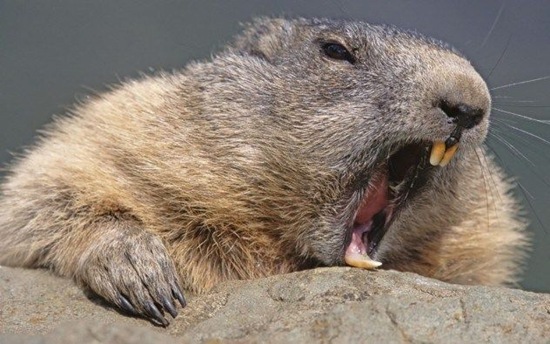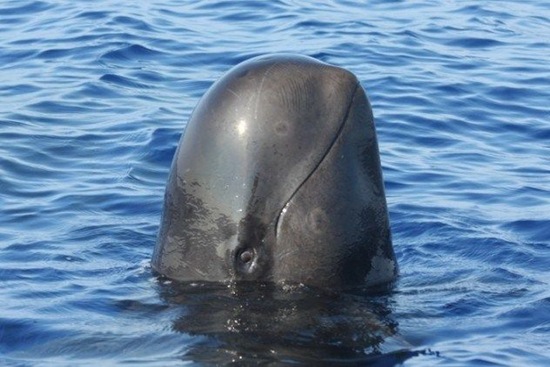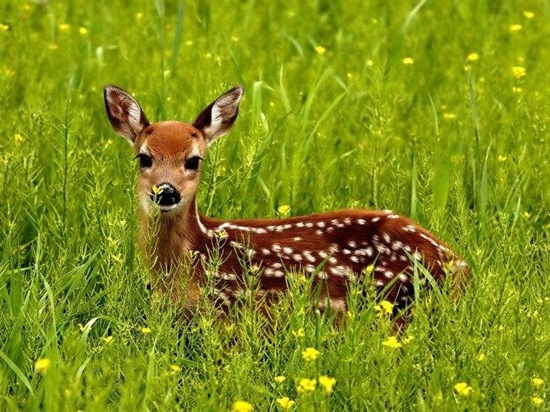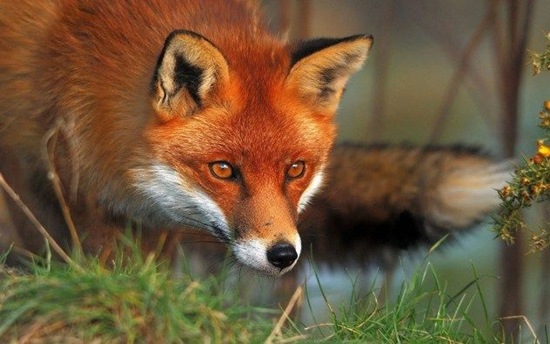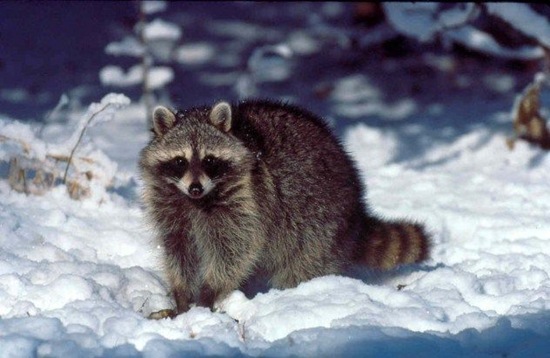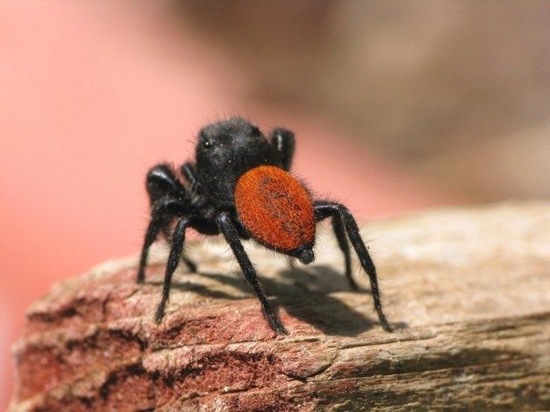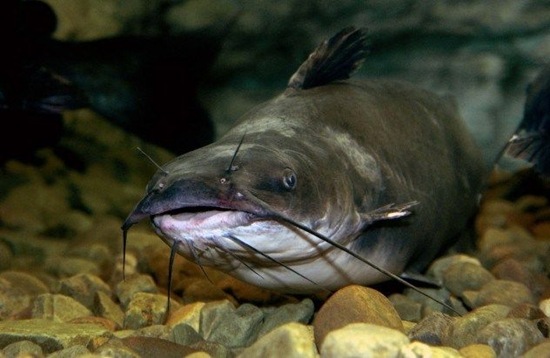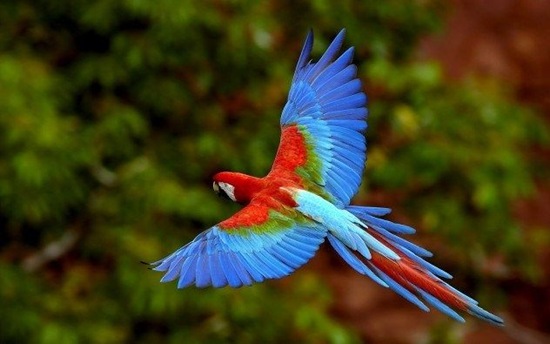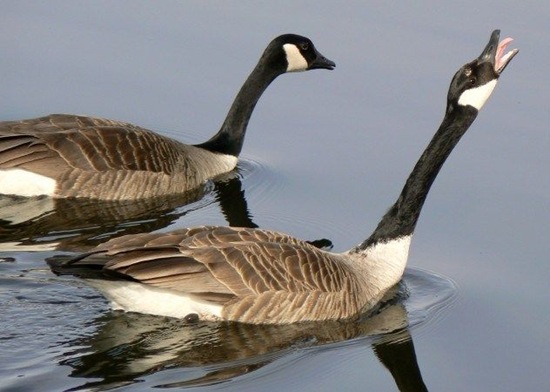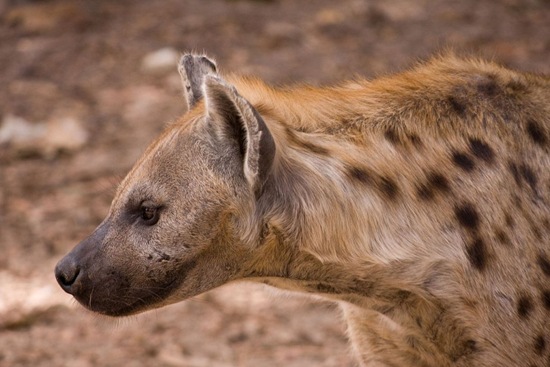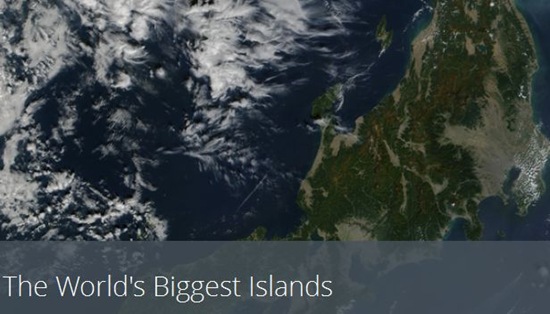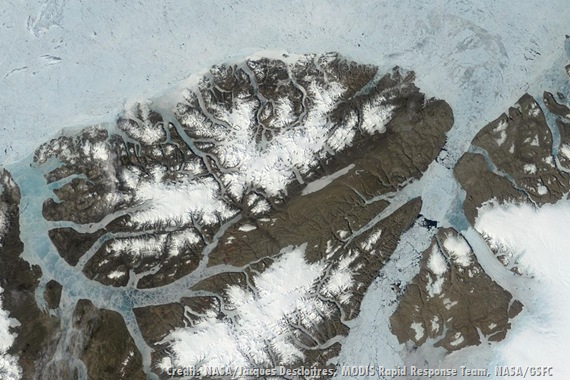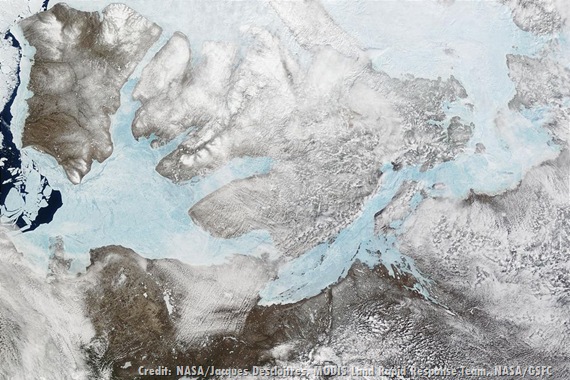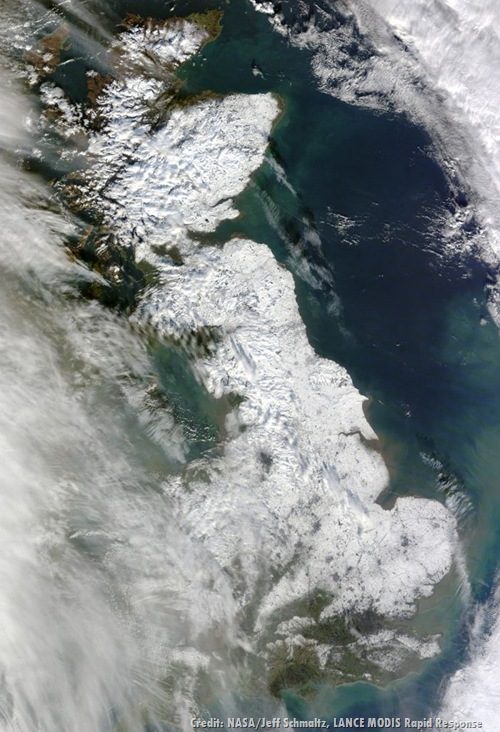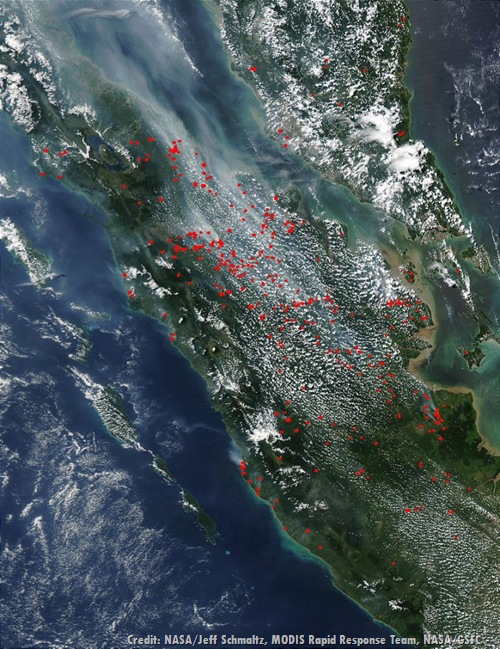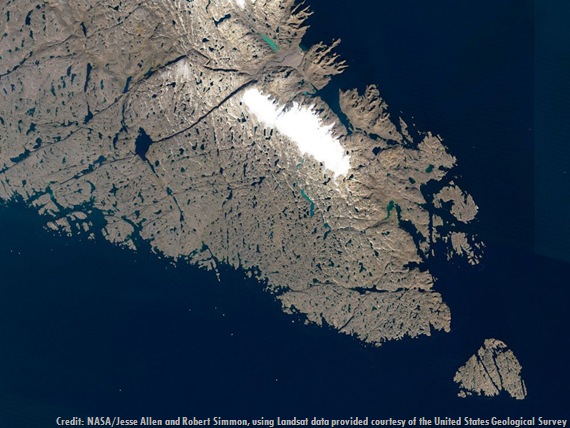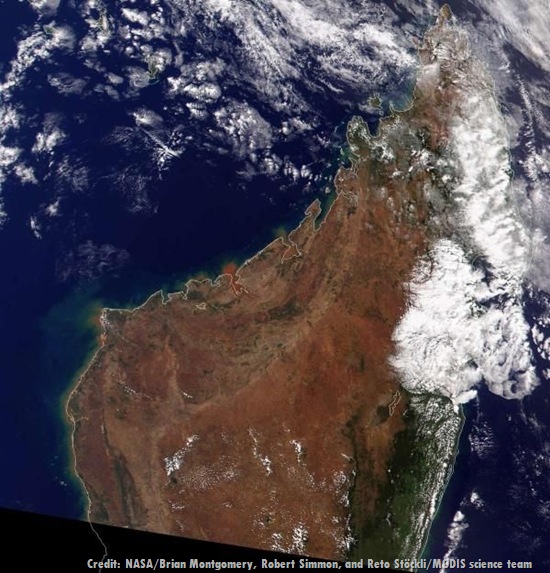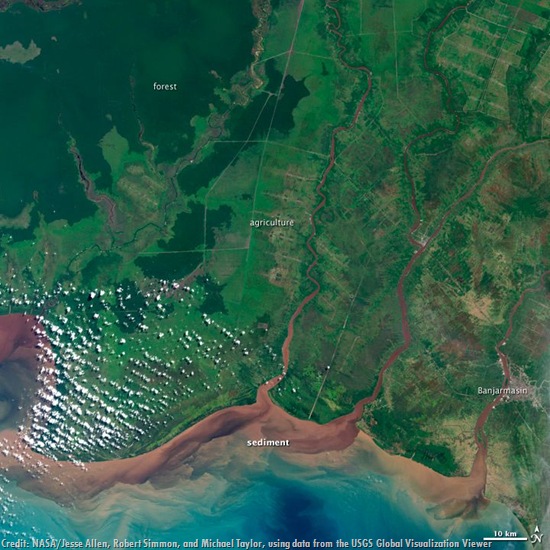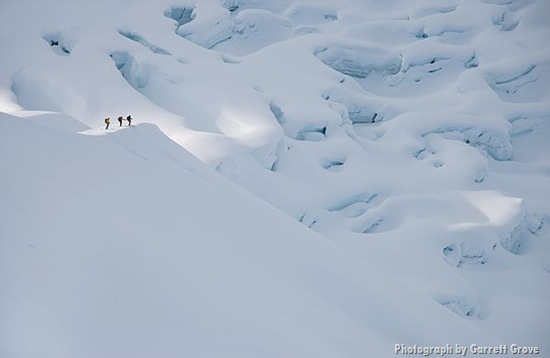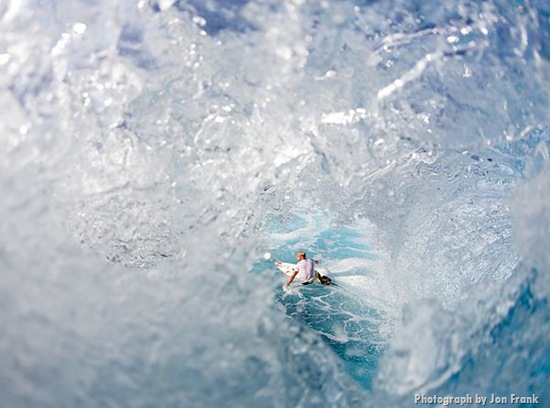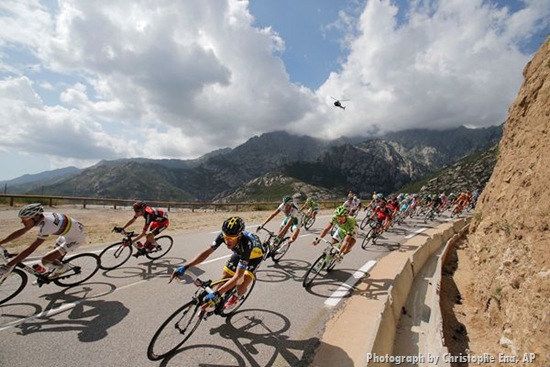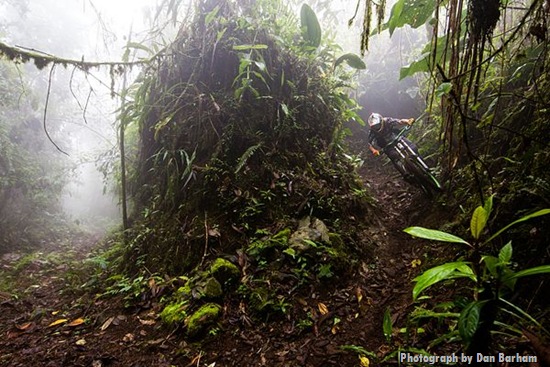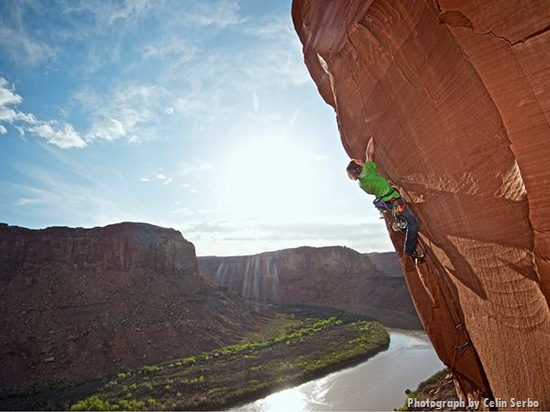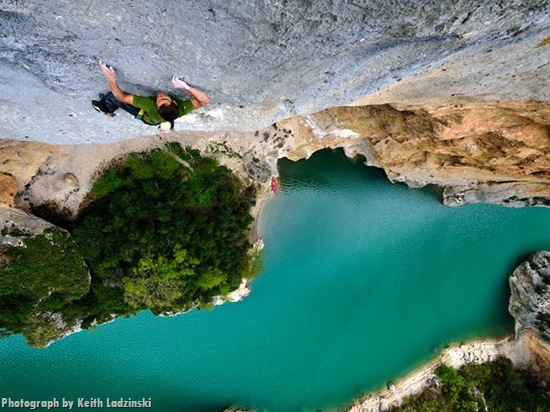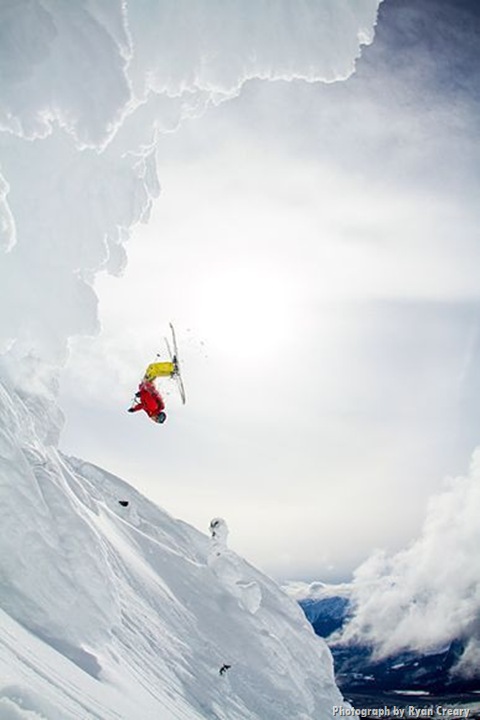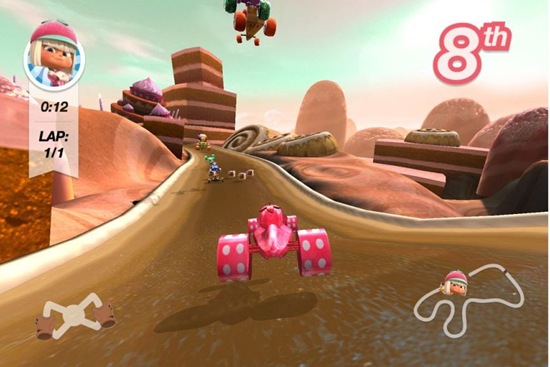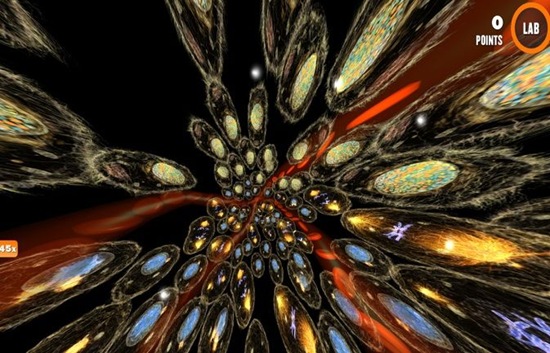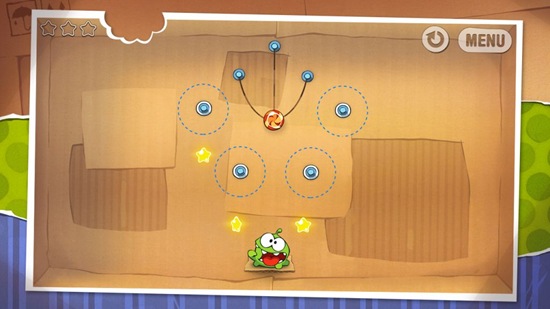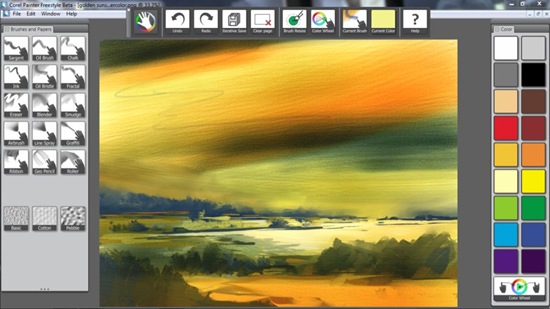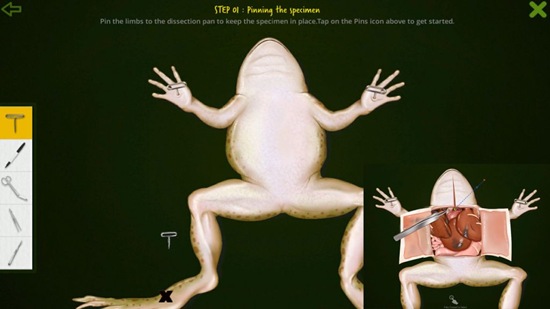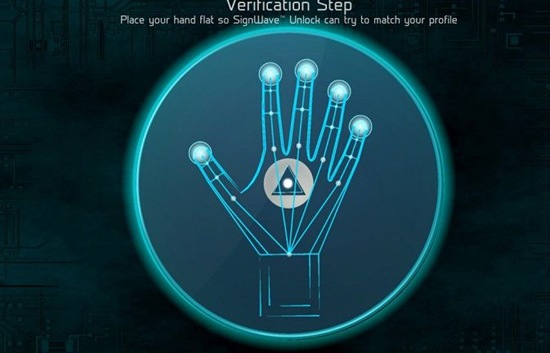
1. Ski Touring the Ruth Gorge, Denali National Park, Alaska
“The slope below us had some avalanche potential, so we had regrouped to assess it,” recalls ski mountaineer Andrew McLean, seen here with Noah Howell and Mark Holbrook on a final descent back to camp after a long ski tour in the Ruth Gorge area of Denali National Park. “I ended up going first but did so very cautiously by ski-cutting the slope and trying to get it to slide. There was some surface sluff but not much else."
“The Ruth Gorge is an incredibly scenic place with tons of climbing history and iconic peaks - Moose’s Tooth, Bear’s Tooth, Dickey, Huntington, and more - all packed into one tight area. It is also very easy to get to," says McLean when recalling the ten-day exploratory trip. "In terms of ski mountaineering, it is kind of all or nothing - either flat or vertical, which makes it a tough place to ski. Still, in the right conditions, there are some amazing lines in that area.” McLean moved to Park City, Utah, 25 years ago. He has made steep, remote first ski descents on all seven continents.
Getting the Shot
“It was cold, definitely the most sustained cold I have ever dealt with,“ says photographer Garrett Grove. Throughout the trip the temperature hovered below zero, reaching minus 25°F at night.
Anticipating the challenge of working in such frigid conditions, Grove gathered tips from long-time ski photographers Jordan Manley and Christian Pondella before the expedition. “The two essential tips were: Keep your camera bodies and lenses outside in the cold but sleep with all and any batteries," says Grove. "Every night my camera and lenses would just sit out there, and I would nestle in with about five to six batteries, a hot Nalgene of water, and my ski-boot liners.”
2. Surfing at Teahupo'o, Tahiti, French Polynesia
“While surfing you see so many different angles of the waves,” says Aussie Mick Fanning, seen here on the world-class surf break Teahupo'o off Tahiti. “Jon [Frank, the photographer] really captured one of those moments with this shot.” Fanning won the Billabong Pro Tahiti in 2012 and is currently training for this year’s competition at the legendary surf break in August.
“Teahupo'o is one of the heaviest, most perfect barrels in the world,” says Fanning. “There is so much adrenaline flowing through the body - it's very high energy.”
Getting the Shot
“Shooting from the water is my preferred perspective because there is a much greater chance of capturing something unusual and unexpected than when shooting from the beach or from a boat,” recalls photographer Jon Frank, who had arrived with long-time friend Fanning in Tahiti two weeks before the surfing world tour competition in 2009 to test the waves at the famed Teahupo'o surf break. “There is a much higher risk you may not be in the optimum position for the best wave of the day or might miss the best action altogether, but I firmly believe that low risk equals low reward.”
To capture this unusual composition, Frank had a bit of luck and great placement in the water. “There is a very tight window of opportunity with a picture like this; everything is moving so quickly. There is certainly some luck involved. It makes up for the other one hundred times that I have just missed out on the peak moment because my timing was off by a tenth of a second,” says Frank.
Frank photographed with a Canon EOS 1Ds Mark III and a 15mm lens.
3. Kayaking Over Santuario Waterfall, Amazonas, Brazil
Getting the Shot
“Santuario is definitely not your average waterfall,” says kayaker and photographer Chris Korbulic. “It almost seemed like a waterfall M.C. Escher would dream up, with different channels and water coming out of the walls.” Korbulic and long-time kayaking partner Ben Stookesberry, pictured here going over Bazil's Santuario waterfall, spent seven weeks exploring the waterfalls and rivers of Brazil, Venezuela, and Guyana.
In order to get this shot while helping Stookesberry set up at the waterfall's lip, Korbulic used a remote camera. “I needed to be over at the lip with Ben to help secure his entry into the water, but I didn't want to give up this shot," says Korbulic. "So I left the camera on a tripod, tied it to some slick roots hanging over the falls, and brought my remote shutter release and another camera out to the lip."
The region had been hit by heavy rainfall, and the brown water thrashing below the falls prevented the kayakers from knowing what what was beneath the water's surface. “As Ben went over the lip the front of his boat caught a rock edge, stalled his forward momentum, and sent him barrelling upside down into a pretty awful looking cauldron,” recalls Korbulic. “After Ben came out safely, I was almost just as worried that my camera didn't fire as I had been about Ben! I rushed over and checked my camera to find what would be my favourite shot from the trip, setting a great precedent for the next six weeks of travel.”
4. Cycling Corsica, Tour de France
Spain's Alberto Contador, centre in blue and yellow, speeds down Vizzavona pass, which runs between Corsica's Monte d'Oro and Monte Renoso, during the second stage of the 100th Tour de France on Sunday, June 30. Stretching over 156 kilometres (97.5 miles), this stage starts in Bastia and finishes in Ajaccio, Corsica. This year marked the first time the tour route included the mountainous French island.
5. Night Surfing at Keramas, Bali, Indonesia
“It was quite weird surfing with the lights blaring in my eyes,” says Australian surfer Adam Melling, seen here night surfing during a non-competitive expression session at the Keramas wave break off Bali. “All you can see is what’s on the top of the water. It’s hard to tell where the reef is shallow.”
The Oakley Pro Bali was held here June 18 to 29, 2013, because it is a great wave for high-performance surfing, allowing for aerial moves, big turns, and getting barrelled. But surfing the break in darkness is a different challenge. “It was hard to see the waves coming - they just pop up in front of you, then you got to swing and go. If you look into the lights you go blind until your eyes adjust again.”
The stadium-style lights illuminating the scene attracted an unexpected surfing spectator - bats. “There where a bunch of bats flying around the lights,” recalls Melling. “I don’t want to know if anything else was drawn to the lights in the water bellow.”
Getting the Shot
“We were not able to see any of the waves coming at us in the night,” says Russ Hennings, head photographer for the Oakley Pro. “Being in the spot to obtain the photos put us in a very dangerous place.”
Shooting from a Jet Ski, in the dark, Hennings and the water patrol put their experience to the test. “There were waves breaking in different spots and in different sizes,” recalls Hennings. “Several times we were caught off guard and had to bail from our position to avoid the breaking waves.”
Hennings decided to push the limits of his Canon 1DX and rely solely on the ambient light from massive stadium lights, set up at the nearby hotel. “The lighting was very difficult to capture. I was limited to my exposure and film speed. I was able to push the ISO 12800. I have never used this setting before, but the conditions forced me to it. I was really quite happy with the results.”
Hennings photographed with a Canon 1DX and a Canon 70-200mm, f/2.8 L series lens.
6. Windsurfing on the Pistol River, Oregon, USA
"I remember being really cold, but I wanted to get a few more moments in with the helicopter before the sun set," says windsurfer Levi Siver, who was shooting for the upcoming film WindBoost. "I felt very blessed sailing late into the sunset having that beautiful canvas behind me."
Located a six-hour drive from Portland, this coastal spot is always windy and picks up swell from both the Northern and Southern Hemispheres. "It's a pretty remote place, but windsurfers from around the world have been coming here for decades," Siver says.
"Using the wind as your energy, you end up riding five times as many waves as you would surfing," notes Siver, who lives in Maui. "It used to bother me that mainstream America is so out of touch with how progressive the level of windsurfing is now. But popularity means more crowds, which equals less fun."
Getting the Shot
“I shot over 800 images in an hour while in the helicopter,” says adventure photographer Michael Clark, who got this image while on assignment for Red Bull. “With such high winds, the helicopter gets buffeted around quite a bit. Just keeping the windsurfer in the frame can be difficult at times."
A veteran of photographing from a helicopter, Clark worked closely with the pilot. “Cody, of Apex Helicopters, was an excellent pilot and was able to get us down low, only ten feet off the water, and moving at the same speed as the windsurfer.”
As Siver aimed for the highest windsurfing jump, Clark kept shooting. "It was incredible to see him go to work, and his windsurfing abilities were absolutely incredible to watch,” Clark says.
Clark photographed with a Nikon D4 and a Nikkor AF-S 70-200mm, f/2.8G ED VRII lens.
7. Biking the Mama Rumi Trail, Ecuador
“Decades of foot traffic have worn a path deep into the hillside in some areas that is part foliage tunnel, part natural half pipe," says adventure photographer Dan Barham of the Mama Rumi Trail in Ecuador. "It makes for a lot of fun on a bike."
Jorge Perez, owner of the Ecuadorian tour company Tierra del Volcan, originally ignited Barham’s interest, and the photographer headed down the mountain with local rider Fercho Gaibor (pictured). “Jorge spoke of a trail that was originally an alcohol bootlegging route that had been rediscovered and cleared by the local trail builders,” recalls Barham.
The trail winds down the mountain and through a banana plantation, ending in Telimbela in the Bolivar region. “The trail goes through different climate zones throughout its relatively short course - from high mountain forest through rain forest and ending in a banana plantation,” says Barham.
Barham photographed with a Canon 1D Mark IV and Canon 14mm, f/2.8 L II lens.
8. Climbing New Routes Along the Green River, Utah, USA
“Just being in a remote place with good friends and learning something new was an unforgettable experience,” says climber Daniel Woods, seen here on an unknown route in Labyrinth Canyon along Utah's Green River. “My goal on this trip was to learn how to trad climb and go into the unknown,” says Woods, whose background is in bouldering, sport, and competition climbing. “The feeling of being a beginner again was humbling, but I had some of the best to teach me - Matt Segal, Alex Honnold, John Dickey, and Renan Ozturk - and they did just that.”
With learning to climb comes learning to fall. “The best part of the trip for me was falling on double 00 TCUs [protective gear placed in the rock] for the first time," recalls Woods, who lives in Boulder, Colorado. "As I was falling, I placed my hands over my head in mid-air, just waiting for the gear to rip and for me to hit the ground. Luckily, the pieces held and I survived.”
Getting the Shot
“You could set up just about anywhere and have a great adventure,” says adventure photographer and climber Celin Serbo of this journey along Utah's Green River. The team kayaked the river and concentrated on two areas Serbo had climbed and scouted on the previous trip. “We were looking for a high concentration of unclimbed routes per location. Photographically, I wanted to highlight the routes these guys put up, while giving it a scene of place.”
Looking to capture the canyon and river, Serbo set up on a nearby pillar to shoot Woods. He had to battle dust and limited light due to narrow canyon walls. “When the light was really good on the canyon rim…we were completely in the shade. This affected timing for shooting and gave us roughly an hour in the morning and evening of great light,” he says.
Serbo photographed with a Nikon D800 and a f/4,16-35mm lens.
9. Climbing in the Verdon Gorge, France
"This particular area is accessed via kayak because of the immense canyon walls - it's the only way in. It’s a pretty special approach," says climber Jonathan Siegrist, seen here about 225 feet above the Verdon River in France’s Verdon Gorge. The canyon, considered one of the most beautiful in Europe, is not far from the French Riviera and is popular with tourists - and rock climbers.
"This is an amazing route in a very unique cave hidden low in the gorge,” says Siegrist. “The route begins with some very overhanging and gymnastic climbing through mostly good holds, then it pulls the roof and finishes on this immaculate headwall of blue limestone." Siegrist, who lives out of his van parked mostly in Colorado, has been climbing for the last nine years. "This was the first hard route I have climbed in Europe on my first European climbing trip," recalls Siegrist. "Hopefully I’ll be back when the water is warm enough to jump in!"
Getting the Shot
"It was one of the most spectacular canyons I've ever shot climbing in, perfect in every way,” says globe-trotting adventure photographer Keith Ladzinski. Ladzinski headed to Verdon Gorge with climbers Siegrist and Nina Caprez to explore the roots of French sport climbing.
"When I first saw this cave I knew immediately that it was going to yield a pretty wild top-down perspective," recalls Ladzinski. The trio kayaked to the location, and Ladzinki set up above Siegrist, who had hung a static line from nearby anchors. “It gave the ultimate bird’s-eye perspective of the route he was trying. I used a basic pair of extended painter's poles to boom out from the wall to get the shot - it was an exciting perch."
After returning to their boat they discovered the boat had a hole. “We rowed hard - and laughed harder - and were only mere inches from the surface of the water when we got back to the shoreline,” says Ladzinski. "I thought we were going to have to swim and that would be bad for all of the camera gear in the boat! That sort of adventure makes it a better memory somehow, you laugh about it while it's happening - and for years to come. In some ways, it’s the best part of the job."
Ladzinski photographed with a Nikon D4 and a 14-24mm, f/2.8 lens.
10. Skiing South Bowl, Revelstoke, British Columbia, Canada
“Despite all the risks, nothing in the world can compare to the elation that comes from the mix of extreme joy, adrenaline, and exhilaration you feel when you ski away from a trick like this,” says freeskier Carter McMillan, seen here doing a backflip among the “snow ghosts,” trees coated in rime crystals due to high humidity and sub-zero temperatures, in-bounds near South Bowl at Revelstoke Mountain Resort.
While ski touring, McMillan and friends hiked 30 minutes up from the highest traverse in South Bowl to make sure they were alone. “Revelstoke has a perfect combination of incredibly deep snowfalls, endless and easily accessible backcountry terrain, and a dedicated group of riders and friends to shred with,” says McMillian, a Calgary, Canada, native who skied on the last three Freeride World Tours. “I have skied all over North America and have never found better extreme skiing training grounds than we have here in Revy.”
Getting the Shot
“It was one of the standout days of the season, for sure,” recalls photographer Ryan Creary. Shooting in Revelstoke’s backcountry, near Mount Mackenzie, Creary and McMillan found themselves with a perfect day for playing in Revelstoke’s powder-covered terrain. “There are typically only a handful of sunny days in Revelstoke, so any day the forecast is for sun, I try to get out to shoot.”
Snow ghost trees dot the alpine slopes and Creary used them to frame his photo. “Those trees added depth and texture to the image. I set up on the side of the cliff band, and to the side of McMillan, so I could showcase his amplitude and keep the background nice and clean.” The duo shot this flip before sunset crept in. “He stomped the flip clean, first go, and I was stoked with the image,” says Creary.
Creary photographed with a Canon 7D and Canon 15mm, f/2.8 fisheye lens.

